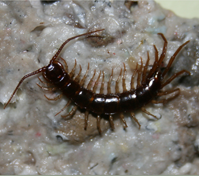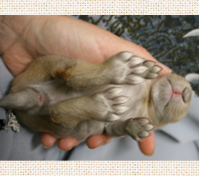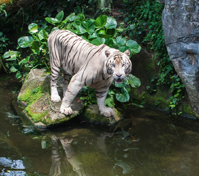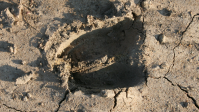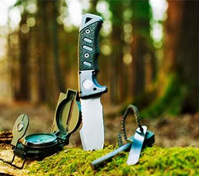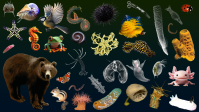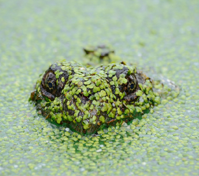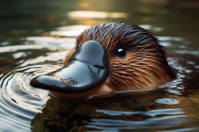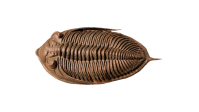- Try to Understand Me, or the Basics of Ethology
It would be great to understand living creatures, wouldn't it?
Let's try to figure out how to do it. We will start with dogs and cats. And then try to understand other people - it is sometimes even more difficult.
And at the same time, we will get acquainted with the basic principles of animal training.
-
Wildlife in the City
If I ask, what kind of animals live in our houses? For sure, cats, dogs, parrots, and other pets will come to mind first. But our homes are a pretty attractive place. And if you look closely, you can find many more exciting creatures. They even have a particular name - "synanthropic animals." They are not domesticated, and they prefer to live closer to us.
Who they are, we will learn from this lesson.
-
Caring for Pets
In this lesson, you will learn how to properly care for pets so that they are healthy and happy. If you love petting animals, brushing their fur, and posting their photos on social media—that's wonderful. But to be a responsible pet owner, you need to know how to choose a pet, how to arrange its living environment, and check if it has any issues like ringworm or worse. Let’s figure it all out together.
-
A Critical Look at the World's Best Zoos
Attitudes toward zoos are now very different. Many people who love animals and want to protect them are very negative about zoos and call for the closure of zoos by releasing animals.
On the one hand, their position is understandable - since it is unpleasant for people to sit in jail, this is a punishment. On the other hand, the situation with animals is not so simple.
In this lesson, we’ll try to figure out whether animals are so bad in zoos and whether they will be so good in the wild.
- Animal Tracking
Sometimes, to get acquainted with some animals, you must go to the forest and watch them in natural conditions. But to observe them, first, we have to find them. And it is not as easy as it seems!
-
We will learn to brutally survive in the forest, comfortably sitting at home on the sofa.
- How Smart Are Animals
This question is not easy to answer. Even for humans, there are no exact criteria to define his mind. How, for example, can you decide who is smarter - a person who solves mathematical problems well or who is very well-versed in other people's emotions, and knows how to support and cheer up on time? So it is with animals.
Some animals are smarter than others, but the criteria by which you can compare them are still imperfect.
Therefore, we will not claim absolute truth, but we will understand what is already known today.
-
- Vertebrates
Vertebrates are a subtype of chordates that we met in the previous lesson. In short, vertebrates are chordates with a skull (and, of course, the spine).
In the lesson, we will get acquainted with various vertebrates, find out where they live, and how the classes of vertebrates differ.
- The Basics of Fish-Keeping
A well-equipped aquarium is a super "TV" for observing wildlife; it is clean and beautiful, just a joy for the eyes. But for this to be the case, you need to be able to care for the aquarium.
In this lesson, we will learn the basic principles for choosing parameters for an aquarium so that the fish live in it for as long and happily as possible.
- The Life of a Frog
Now it is a frog time. We'll discover how they grow, where they live, and even play some frog-tastic games.
- Reptiles
“This is a group of animals with blood; animals are mostly oviparous, sometimes viviparous, four-legged or legless, often covered with scales” - this is how the ancient Greek philosopher Aristotle described reptiles. Although the description is recognizable, we have learned a lot since then. Jump in if you want to learn more.
- Modern Dinosaurs
“What kind of modern dinosaurs?”, you want to ask me. Yes, the most ordinary ones that fly outside the window. “What? ... Yes, yes. There is no mistake here. Wings and the ability to fly, feathers, beak, warm-bloodedness, the ability to lay eggs - everything that distinguishes birds from other vertebrates has appeared in dinosaurs. So we take dinosaurs and scrutinize them.
- Mammalian Diversity
We know so much about mammals that in this lesson, we will only open the door to their world and see how they differ from other vertebrates and how diverse they are.
- Introduction to Entomology
This lesson will teach how to distinguish insects from other arthropods and distinguish insects from different orders.
- Butterflies from Around the World
In this lesson, we will learn how to distinguish butterflies from other insects, find out how they look, where they live, what they eat, and play the Kaleidoscope of Butterfly Wings.
The best-willed ones can even make a card with a butterfly with wings that open and close!
- Little Builders of the Big Termite Mound
- How an Anthill Works
- Bee Life
- How Does the Human Body Work
- Evolution and Types of Selection
Beautiful and mysterious tropical rainforest makes you want to visit a real one, wander around, and look for wonders... Charles Darwin thought the same, and one fine day, he fulfilled his dream and arrived at the Galapagos Islands. The captain of his ship, the "Beagle," Robert FitzRoy, planned to map South America and its coastal waters. Darwin joined the expedition as a naturalist. On the Galapagos Islands, he noticed something that others before him had not - small finches. Do you see them? Still not clear what's special about them? What if you zoom in on their beaks? I hope you found an interesting feature, just like Charles Darwin did. By looking at these beaks, he understood the principle of evolution. Interested? Then let's figure it all out step by step.
-
Ice Age
We will learn what the Ice Age was, when it happened, why we are sure it happened, and what animals lived there.
-
How Did Humans Evolve
This lesson will trace the evolutionary chain from the ancient ancestor of apes - the purgatorius - to Homo sapiens. Let's see who did what for our ancestors and determine if we are the most intelligent people on Earth.
-
How to Survive on a Deserted Island
Lying with closed eyes, you feel the delightful warmth of the morning sun. The surf is noisy nearby. Opening your eyes, you see a swaying palm tree above you... Stop! Where are we? We are playing a role-playing game. Today, we will survive on an uninhabited island, where we have ended up after a shipwreck.

